In this artist’s interpretation, baby planets forming around the young star HD 142527 are pulling streams of gas inward toward them as they grow. Much of the gas then overshoots the planets and continues inward to the portion of the disk close to the star, where it can eventually fall onto the star itself.
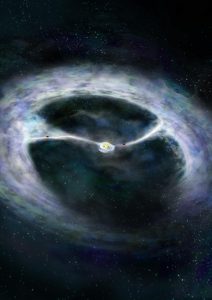
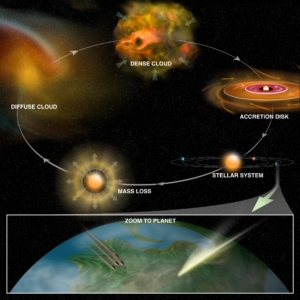
Seeding Planets with Interesting Chemistry
The most massive stars in a cluster of stars have a tremendous impact on the formation and environment of the rest of the cluster, including the less-massive stars and their planets. The massive young stars are surrounded by “hot cores” that include copious organic material that later may be spewed into interstellar space by stellar winds and other processes. This can help “seed” star-forming regions with some of the chemicals found by the Green Bank Telescope (GBT) and other telescopes.
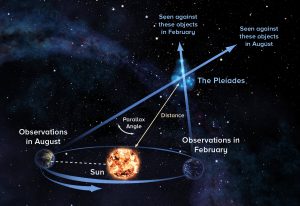
Measuring the Distance to the Pleiades
Using the parallax technique, astronomers observe object at opposite ends of Earth’s orbit around the Sun to precisely measure its distance.
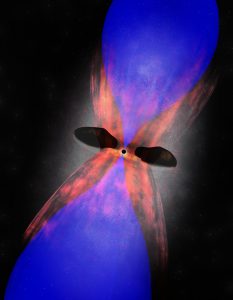
The Center of the Phoenix Cluster
Artist impression of galaxy at the center of the Phoenix Cluster. Powerful radio jets from the supermassive black hole at the center of the galaxy are creating giant radio bubbles (blue) in the ionized gas surrounding the galaxy. ALMA has detected cold molecular gas (red) hugging the outside of the bubbles. This material could eventually fall into the galaxy where it could fuel future star birth and feed the supermassive black hole.
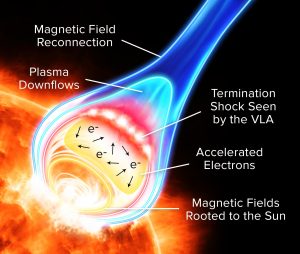
VLA Yields New Insights on Solar Flares
Artist’s conception of particle acceleration in a solar flare.
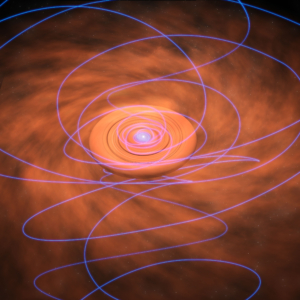
Twisted Magnetic Fields Give New Insights on Star Formation
Magnetic field lines (purple) are twisted as they are dragged inward toward a swirling, dusty disk surrounding a young star in this artist’s conception.





